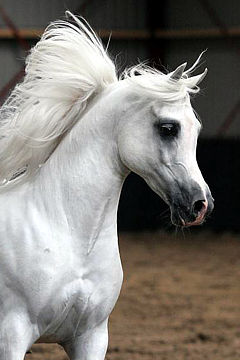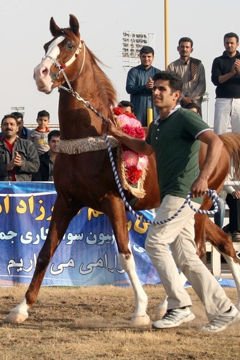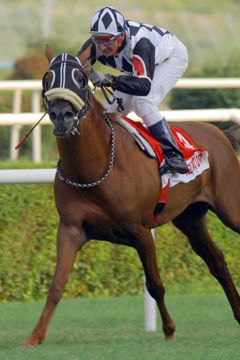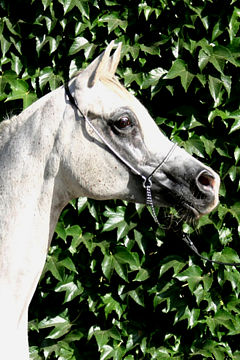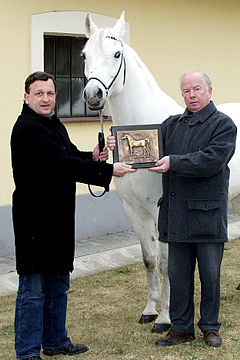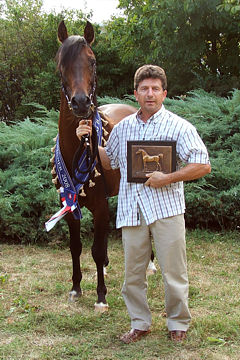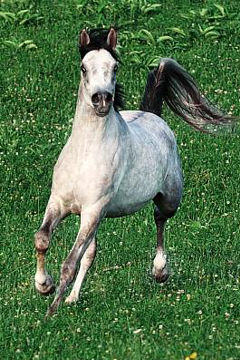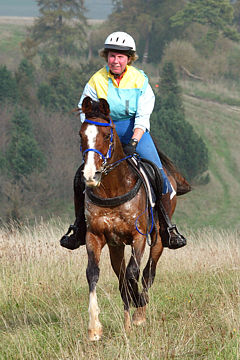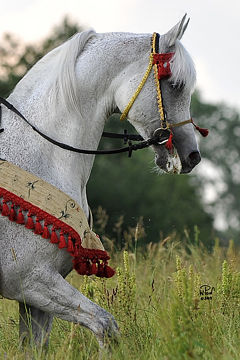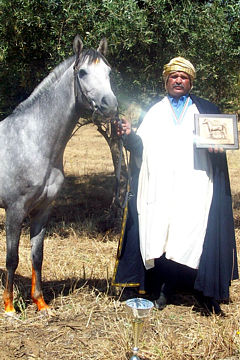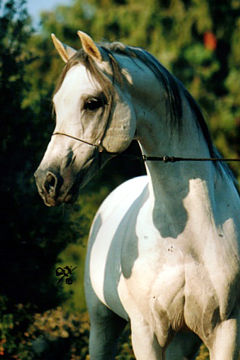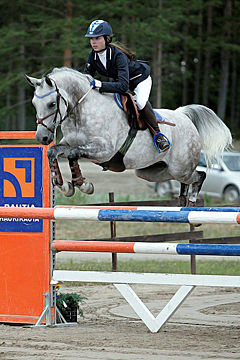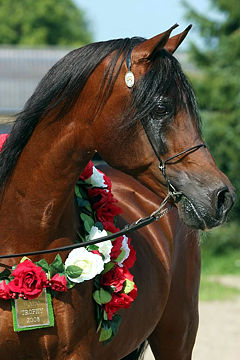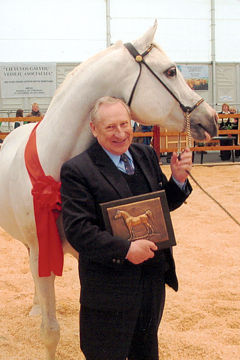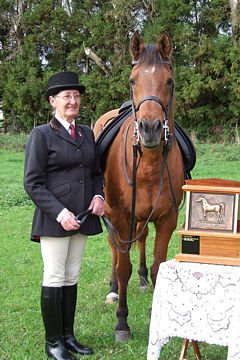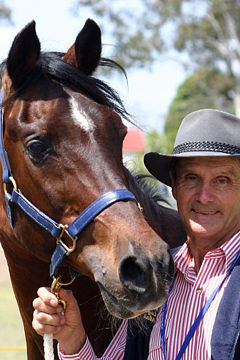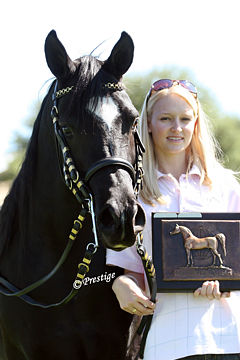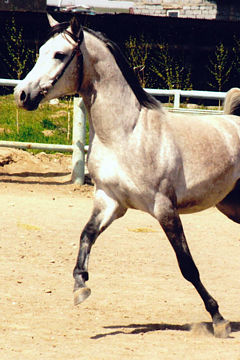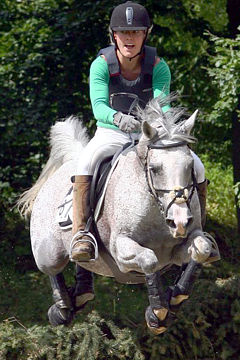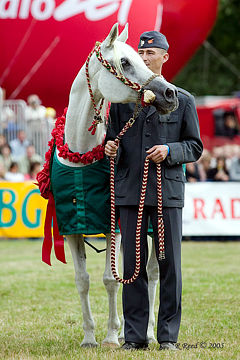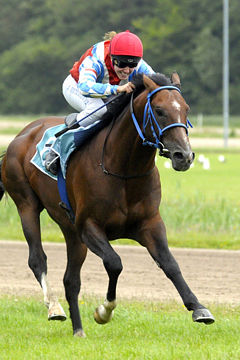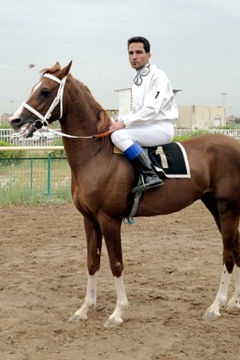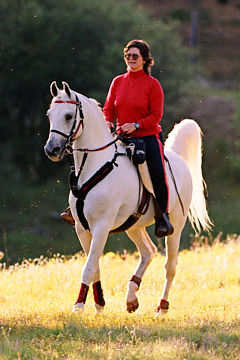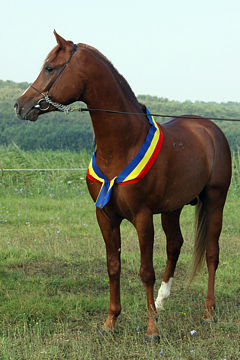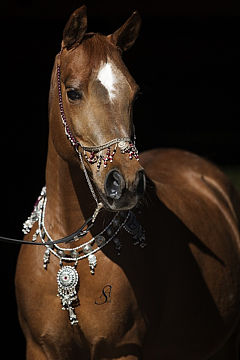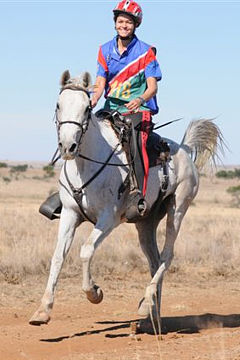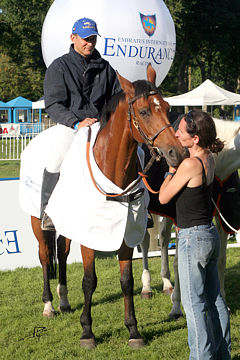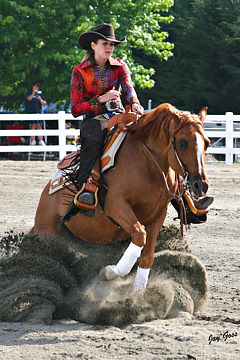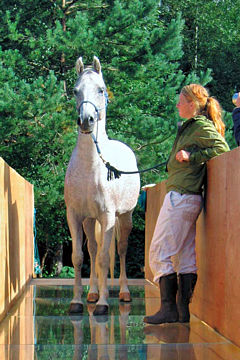![]()
Member Report from United States of America
REPORT MADE AT THE 2019 WAHO CONFERENCE:
Debbie Fuentes, U.S.A.: Good afternoon. We of the United States would like to express our sincere appreciation and gratitude to our hosts, the Arabian Horse Society of Australia has just been fantastic, everyone that I have encountered and visited with has said this is such a lovely event and we are incredibly grateful, and I thank them.
Mr. President, distinguished Delegates, ladies and gentlemen I have a few things to report. I am not going to go over all the statistics because you have them in written form, but I would like to highlight a few things. So in 2018 we registered just shy of 3,000 foals which was a little bit of a disappointment, as in 2017 we registered just shy of 3,200 foals and we really expected our 2018 numbers to be the same. Flat is the new high in the United States unfortunately, but we were down some for a couple of anomalies. We have more pending, we did not have as much time to work on our pending foals so we typically have 1,200 to 1,300 foals pending at an given time, because they come in and we do our part and then it goes back out and then the breeder needs to pick up their part with the hair samples or if they are missing any signatures or markings and we dedicated our effort to moving those along but we didn’t have as much time as usual. We also had a rather large investigation in the United States which has worked out incredibly well and is now resolved, but that also took a significant amount of time, I think I took five trips to check some additional racehorses around the world, I think Val Bunting knows about this probably more than all, and the good news is they were all correct except for two racing horses in USA for which we cancelled their certificates of registration, but the amount of time that my team and I devoted to that affected our completed registration numbers just a little. So we anticipate in 2019 to be flat again, or a little bit up, we hope to make at least 3,000 or 3,100 again.
As we talked about in our Registrars Meeting, our stud book DataSource is online, it is updated weekly, soon to be daily, however, Australia still has us beat as they update hourly as Helen told us, when I was so proud of daily. We are also rewriting that programme so that it will have a new look and some more features in terms of search criteria, that should be launched in the next month or so. And as a reminder, all WAHO Registries are welcome to complimentary access to that, if you just send me a note or speak to me while here, I would be happy to get you all set up and anybody of course on the Executive Committee, I think some of you I have already set up.
We had just shy of 18,000 members at the end of last year, again that number was on the decline and it is bound to decline every year by 5% or 6% for many years unfortunately. I have good news and bad news regarding our registration numbers, so the good news is it’s not just us, our sister breed organisations in the United States have experienced very similar declines, Quarter Horse, Paints, Thoroughbreds, Appaloosas, Standard Breds, it is across the board. My bad news is that it is not just us, meaning it is a significant issue and we thought we had turned the corner so we will see what 2019 brings and we joke at the all-breed meetings that I am involved in, that flat really is the new high.
As far as exports go, we exported just under 450 horses in 2017, but just 408 in 2018 so they went down about 12%, they were exported all over the world. We import very few horses probably 35 to 40 every year. Embryo transfer and transported semen are areas that we have seen increased activity in. So in 2017 and in 2018, 14% of our foals were produced as a result of embryo transfer. The average donor mare’s foal production would be 1.5 which says the majority have one or two, giving us the average of 1.5. We have very very few donor mares that have ever had 3,4 or 5, like a handful, which is continuing along. We have also seen an increase in transported semen. So at the start we began transported semen in 1995 and it was 11, 12, 13% for many years and then it started to rise into the 20s then to 25%, well last year it was 35% of our foals were produced as a result of transported semen. Anecdotally that says to me that more of the show horses are being registered quicker, they are the ones that would more likely use transported semen to incur that extra cost. We are aware that we have an unregistered population of horses as well, that people wait too long. One of our big breeders, very respected, registered 29 horses at the end of the year and two thirds of them were over two years of age, and like other breeds your fees are much lower if you send them in sooner so we really encourage people to do it within 6 months but for some reason people are waiting, and I have heard that from others.
The Association hosts four National Championship shows, the Sport Horse Show would be the smaller show that has around 400 horses in it. In our US Nationals which is in October every year and now in Tulsa, Oklahoma it has been there for seven or eight years, it used to rotate, we will have around 1,700 horses. The United States and Canada are under our purview as far as shows go, it’s been that way since we merged with the International Arabian Horse Association. In Canada we have about 800 members out of our total of just under 18,000 members. There are 2 regions in Canada and 16 in the United States and they each have a Regional Show which is also a very high status. Participations and presence in our shows has remained about the same, it goes down just a little bit. On the plus side I am sure almost all of you have been to the Scottsdale show which continues to stay the same or grow a little, they will tend to have 2,300 to 2,400 horses at that show which is at the end of this month, it is just a fantastic show.
The Registration Commission is the body that oversees registration in the United States, the Board of Directors have no influence on registration and it is not just Arabians that do that, the other breeds do as well, they have a special Board just for registration, to keep the purview or the fads or whims of the Board from affecting any sort of the history and the integrity of registration. That body meets twice a year and they take their meetings on the road, since the start of our merger in 2003 we have probably gone to 38 or 40 places since, they have the business meeting on Friday in conjunction with an open house and a breeders forum on a Saturday and those have been very well received. This concludes my report.
REPORT AT THE 2017 WAHO CONFERENCE:
Deborah Fuentes, United States of America: The American delegation extends our sincere appreciation and gratitude for the incredible and lovely hospitality extended to us by His Majesty King Hamad Bin Isa Al Khalifa and His Highness Sheikh Isa Bin Salman Bin Hamad Al Khalifa, the Royal Arabian Studs of Bahrain, the organising committee and a special thanks to Dr. Khalid and Jehangir. Mr. President, Executive Committee, distinguished delegates, ladies and gentlemen.
I, Debbie Fuentes, have the great honour of serving as Registrar for the United States. We are all very pleased to be here. I have put together some graphs for you just to show registration trends over the years, I think it is easier to see in this manner and this screen is amazing, it is the biggest screen we have ever had so you can actually read the numbers. There are 17 years here and you can see that over the last 17 years we have had an incredible decline and unfortunately this has been true of many of the breeds, actually most of the breeds in the United States. Our light at the end of the tunnel is that when you are comparing 2015 to 2016 our numbers were much closer, in 2016 we registered just over 3000 purebred Arabians and the purebreds are demonstrated by the dark blue in this particular graph and the half Arabians are the lighter shade of blue, you can see throughout the entire time we register about one-third as many half Arabians as we do purebreds.
Export trends: exports have continued to grow for us in the United States and we export a significant number of horses. Our high as you can see was in 2015 which was 647 horses and in 2016 we exported 600 horses, and just to give you a little feel of where they go I think this is very interesting and we have tracked this every year for decades. As you can see in 2016 the incredibly big portion of exports here is to the countries in the Middle East. We exported just under 400 horses to the Middle East, to Saudi, UAE, Qatar and Kuwait and of the 600 total horses they went to 27 different countries as illustrated here.
In the United States, I mentioned this earlier, we as a collective group have seen a decline in registration for more than a decade, I capture the figures for all of the breeds, the major breeds, 15 major breeds in the United States and you can see we have seen an incredible decline. This particular graph only goes to 2015 because before I left I hadn’t captured all of the numbers for 2016, we are missing 2 or 3 of the 15 still. However, the good news is in looking at the other breeds, their numbers and ours compared to 2015, we seem to be at a plateau or a little bit higher which is very good.
This is data that Kina gathers every year for us, and I put this together just to show in terms of registrations for us around the world, our recognised registries in the WAHO family, that they have stayed very much the same and interestingly when we will have the 2015 and 2016 numbers I imagine that has grown substantially, I was just visiting with my friends from Saudi Arabia, sitting just to the right of me, because they have registered significantly more horses over the last few years. This is just a comment about what has happened in the United States, that we have all seen a decline in registration and for many reasons: horses are expensive in the United States, the abolishment of slaughter several years ago has affected us and it has affected all sister equine breed organisations.
As far as activities that the Arabian Horses Association puts on, we do 5 National events each year and of course another main show in the United States is the Scottsdale Arabian Show which is the biggest show in the entire world, it will be held at the end of this month and they will have close to 2,300 horses in the Scottsdale show. So, the statistics for our National events that I have listed here, of the 4 main shows – there is one distance ride and 4 National shows, we vary from between 400 and 1700 horses at these events.
As for promotion and education last year was an exciting year for us, we have done significant things in terms of videos. That seems to be the age of the future and I have some incredible young women on my team who took this project on and they have done tutorial videos for Arabian horse breeders in the United States (available on YouTube) and they started by interviewing 25 respected breeders that were in attendance at the Scottsdale show last year. We have also done a breeder video for how to register your horse, how to register a race horse and just about to launch is the one on how to draw the colours and markings. People sometimes struggle or put that off when completing registrations, so we are trying to make that as easy as possible. As for the interview series, you can see at the top we did breeder interviews and we asked them to give advice to other breeders or people interested in starting breeding. We also asked them to share their story, how they got involved in Arabian horses, what’s important to them and I have to point this out because my friend Mark Wharton is here, you can see at the top he was one of our 25 and we launched that video earlier in the year. We also have in the works, and now launched, we are doing documentaries on the individual breeders that we did interview in Scottsdale and the first one was launched last week.
This has been an exciting thing for us as well, in 2016 we debuted a brand new exhibition booth, this was generously donated and sponsored to the Arabian Horse Association by The Purebred Arabian Trust. It’s an incredibly beautiful booth and we debuted it in Scottsdale last year, as well as taking it to our many other shows, and when we are at these National shows we conduct a good amount of business in this booth, it is manned by the Registry services team, we capture memberships, registrations, transfers and many different things and I bet if Mark looks closely up there he would recognise two of those horses as your own, that are in the photos on the booth that are magnificent. We have also done more with promotion in terms of enticing people to come to the booth and learn more about Arabians, where if you do any sort of business renewal or registration business we have promotional gifts that are just highlighting the Association.
As for our studbook, of course it is an online product called DataSource, it is updated every week. We do offer this as a subscription to our members and other owners in the United States and some around the world have also subscribed to that, and we give complimentary subscriptions to all of the Registrars. I mentioned that in our Registrars meeting yesterday and if there are any late arrivals that are here today, let me know and we will get you set up for this, happily.
And that concludes my business portion of this report and I would like to take this opportunity to share on a personal note. Several times today people have mentioned the WAHO family and this really is a WAHO family, very much so to me, and I would just like to take this opportunity to thank the many of you here that have been so kind over the past several months, sending me notes and messages of good wishes and prayers. I couldn’t be more grateful, they mean the world to me. Thank you.
REPORT AT THE 2014 WAHO CONFERENCE:
Debbie Fuentes, United States of America: Good afternoon, Mr. President, Delegates, ladies and gentlemen. I am Debbie Fuentes and I have the honour and privilege of serving as the Registrar for the United States of America’s Arabian Horse Association. I have just completed my 30 year anniversary with the Arabian Horse Association, I have been Registrar for more than the past two decades. I would like to extend my sincere appreciation and gratitude for the incredible hospitality that has been extended to us by His Highness Sheikh Abdullah Bin Khalifa Al Thani, the Qatar Racing & Equestrian Club, and the organizing committee. We are overwhelmed with such wonderful hospitality and I am truly enjoying my second stay in Doha.
A few statistics for 2013 and 2014 that I would like to share: In 2013 we registered just under 5,000 Arabians and Half-Arabians, that was a decline of 10% over 2012. In 2013 we imported 61 horses, which is higher than normal, we typically import between 45 and 50 horses. In that same year we exported 510 horses to 34 different countries. By number of horses to country, the top 3 countries that horses have left the United States and travelled to are the Kingdom of Saudi Arabia, Kuwait, and the United Arab Emirates. That translates into the USA exporting approximately ten times more horses than were imported.
Our studbook is online, it is updated weekly, it is a product called Datasource. Included in Datasource are approximately 1.2 million horses, and that would include their pedigree information, owner, all the identity of the horse, also their show results and race summaries, and offspring. Our Registry began in 1908. Since the inception in 1908, we have registered 665,000 purebred Arabians and approximately 400,000 Half Arabians. Of the 665,000 purebred Arabians, we approximate about 425,000 to still be alive.
We started parentage verification in 1991 with blood-typing, we then changed to DNA typing officially with the foal crop of 2002, however 85% of the foals registered in 2001 utilised DNA testing because it is so much easier and more cost effective than blood-typing. This is our 24th foal crop of parentage verified foals. In the United States, for the past couple of decades we have experienced a decline in registration of Arabians, this is not unique to the Arabians unfortunately, other breeds have a similar decline. I have good news to report in 2014, for us very good news, we are actually ahead with this year’s registrations compared to 2013, through October our registrations are up 9%. We had an ‘aged horse special’ for 6 months in 2013 and the majority of those applications came in in December, so we attribute the majority of this increase to that ‘aged horse special’.
Some information on embryo transfer and transported semen. We have seen a minimal increase in embryo transfer activity. Of the 3,400 purebred Arabians that were registered approximately 7% of that number, so 260 horses, were produced as a result of embryo transfer. The majority of the breeders utilising embryo transfer in the United States only have one or two foals in any given year, our average is about 1.5 foals per year, so about half have one foal and about half have two foals. It is very rare that mares would have 3, 4 or 5. There have been a few exceptions, but not many. Use of transported semen continues, it has actually become more popular in the United States. Certainly one would assume that reasons of economy and convenience have caused that number to grow. We began with the use of transported semen in 1991, we had approximately 13% of our foals through 1991-95 that were produced by transported semen. In this past year, 2013, approximately 30% of our foals were produced by transported semen.
The Arabian Horse Association hosts 4 national shows each year, at these the smallest show has 400 horses entered and our US National Championship Show, which is held in October, has approximately 1,700 horses participating. The USA and Canada is divided into 18 regions, 2 in Canada and 16 in the United States. Each of these regions have a regional show that is a championship show. Throughout the USA there are approximately 275 other recognized shows. Both performance & halter classes are offered at almost every show, there are very few exceptions to that. Competitive trail and endurance rides have grown, we recognized 200 rides last year. Of all the horses registered, approximately 20% of them compete at some point in their lives, which tells us that the majority of our horses, about 80%, are used for recreational purposes, trail riding, breeding, and so on. As far as promotional activities are concerned, we participate in equine affairs in the USA, we also participate in some of the other breed shows that are similar to us that have Arabians and Half-Arabians participating, such as the Calgary Congress and the Pinto Arabian Show. We work very closely with the other equine breed associations, I am involved in several national organizations, and our goal, collectively of course, is to promote the value of each breed association and continue to build and re-build an affinity to the certificate of registration, to encourage people to register their horses. Several years ago we printed a promotional piece called the Arabian Horse Guidebook, similar to a small magazine, we continue to distribute that at events. This concludes my report.
REPORT AT THE 2011 WAHO CONFERENCE:
Deborah Fuentes, United States of America: Good morning. My name is Debbie Fuentes, I am the Registrar for the United States. I would like to begin by saying how pleased we are to be here with our colleagues and fellow Arabian horse enthusiasts. Additionally, I would like to express our thanks to the Qatar Racing & Equestrian Club and to Sheikh Abdullah Bin Khalifa Al Thani for the lovely hospitality.
To highlight some of our information as requested, in 2010 we completed just shy of 5,000 registrations. The number of registrations completed in 2010 decreased 11% over the prior year. Unfortunately we have had a decline in registrations most years for the last 15 years, and it is universal, it is not just in the Arabians in the United States but the other breeds have also experienced a decline. Some of the highlights in our activities are our export activity, transported semen and embryo transfer. The number of horses that we have exported in the last 5 years has nearly doubled, it is approximately 500 to 600 horses each year. Our import registrations have declined somewhat, and we import typically between 45 and 65 horses per year. Some of the factors in the decline are just that the entire equine industry has struggled in the United States for the past 10 years. As I mentioned, there is a decline in activity for most every breed, the economy has played a factor in that decline, as well as urban sprawl, it’s very expensive to have horse properties near major cities and there have been other issues as well.
Popular activities in the United States: Arabians are used in many disciplines, owners utilize their horses for showing, endurance, trail-riding, racing and recreational activities. Approximately 20% of all the Arabian horses registered participate in a Class A or higher level of competition, in the competition world the overall participation is divided equally in halter and performance. The Arabian Horse Association produces 4 National Shows, we also recognize approximately 250 shows that are Class A or higher. The participation in these shows in the performance area include classes in English, Western, Working Cow, Reining, Hunter and Dressage and there are new shows in the United States that are just for halter and there is a very successful show that is in April in Las Vegas called the Arabian World Breeders Cup, and there will be additional shows doing that in 2012, that will just have halter horses.
Promotional activity: The exciting part, the highlight of the year, was that the Purebred Arabian Trust designed and constructed a new museum, the Al Marah Arabian Horse Galleries, at the Kentucky Horse Park, opened in June of last year. The Arabian Horse Museum is an attachment to the Kentucky Horse Park’s acclaimed International Museum of the Horse. It is comprised of two levels that contain both art and artifacts as well as interactive exhibits. The Galleries tell the story of the Arabian horse from ancient Arabia to the modern day. The Al Marah Arabian Horse Galleries is considered one of the most significant additions ever made to the Kentucky Horse Park. Over one million visitors enjoy the Horse Park each year. In the United States we collaborate and work regularly with some of the other breed Associations, in an effort to work on lessening the decline in registrations, we have several national organizations such as the National Pedigree Livestock Council and the American Horse Council, in which we meet with the other breeds and develop promotional activities. Our studbook is online and to date we have registered just over 654,000 horses. The information is updated weekly and the web address is www.arabdatasource.com. This concludes my report. Thank you.
REPORT AT THE 2009 WAHO CONFERENCE:
On 1st January 2008, the WAHO Registering Authority Member for the United States of America changed from PAHR (WAHO Member from 1 January 1998 to 31 December 2007; the former WAHO Member for USA was AHRA) to the Purebred Arabian Trust.) A full report on their activities, as presented at the 2009 WAHO Conference by the Arabian Horse Association’s Registrar, Mrs. Deborah Fuentes, follows:
I am Deborah Fuentes and I serve as the Registrar for the Arabian Horse Association in the United States. We are very pleased to be here and especially pleased to be part of the World Arabian Horse Organization again.
As requested, I will highlight some of our statistics for the years 2007 and 2008. Our stud book is available on line, it is a product called DataSource, and we have given access to every Registering Authority so that they can check up to date information for all of the horses registered. By the end of 2008 we had completed registration of 640,604 purebred Arabians in USA, and all of that information is available online by subscription to members of the public.
In 2008 we registered just under 9,000 purebred Arabians and Half-Arabians, with 6,120 of those being purebred Arabians. We have a very strong international activity with imports and exports, with which we are specially pleased. In 2007 there were 400 exports and the complete breakdown of which countries they went to is available if anyone is interested. In 2008 that number rose to 428 exports. In 2007 we imported 50 horses, and in 2008 we imported 72, so there was a growth in imports as well. In the Arabian Horse Association we have 36,000, which is a mixed group in that approximately half join as part of a registration-related transaction, meaning they submit a transfer of ownership application or a DNA request or a registration application. The other half, approximately 18,000, join our Association to participate in our competitions, either as an exhibitor, a judge or a steward.
We began full parent verification in 1991, at that time of course we were using blood-typing. We converted from blood-typing to DNA testing in 2002. To touch briefly on Embryo Transfer and transported semen, in 2003 we changed our Embryo Transfer rule to allow multiple foals to be registered from a mare in any given year. In 2004 we saw the effect of that change, and we have experienced an increase in Embryo Transfer activity as a result. Prior to the change about 1% of our registrations, or less than 100 foals, were the result of Embryo Transfer. Since that time, we are now at about 4 to 5%, so between 300 and 350 foals are produced each year by Embryo Transfer. Looking closely at this, we find that most mares have just one or two foals in a year, we have not seen them go incredibly high in the numbers although we did have one mare which produced 5 foals in one year but that is an anomaly. We also allow transported semen and have since 1991 and we have seen an increased in transported semen activity as well, it used to be 13-15% of our foals were bred as a result of transported semen, by 2008 this was 20%.
In terms of activities, the Association offers 4 National Shows that we put on ourselves, there are 18 regions in the USA and Canada that we recognize and each region puts on a Regional Championship Show as well. Additionally, throughout the United States there are approximately 275 recognized Class A shows, and that number has been on the decline due to the economy and the price of gasoline people have cut back in their showing activity. At all of our shows, we offer both performance and halter classes, about 15% of our registered horses participate in shows. We also have a small number, about 1 to 2%, that participate in racing. But the majority of our horse owners really utilize their horses for recreation and they do all kinds of things with them, they do trail riding, cutting cattle, penning, endurance is very popular in the United States, and just having the horse as a companion.
In promotional activities, we have picked up over the last 5 to 10 years. Unfortunately in America we have seen a decline in the registration of Arabians, the good news is it’s not just Arabians, the other breeds have experienced a similar decline, the bad news is we are all on a downhill slope with registrations, and this is something we are taking very seriously as an organization and also with our sister breeds in the USA. One thing that we have done to work very hard to reduce or stop that decline is promotional activity, with market development funding. One third of all registration revenues, the gross revenue, is dedicated to market development of the Arabians in the USA. With that funding we have done many things, we also participate in equine events throughout the USA. This will be the first year that we are participating internationally in equine affairs. We have produced a guidebook on the Arabian horse, I have brought a copy for all of the delegates and for the Executive Committee. We have produced a short video called ‘The Arabian – the Best Kept Secret’, this is given away freely when you click on our website and ask for additional information we send both of these packets to people. There is a documentary film on Arabian horses that was funded which is aired on public television channels and will continue to do so. This concludes my report.
Additional Note: Artificial insemination, imported and exported semen, and the use of embryo transfer with no limit on the number of foals per mare per year, are all permitted. PAT/AHA currently does not use microchipping, nor are passports issued. All foals are DNA typed and parent verified at registration.








